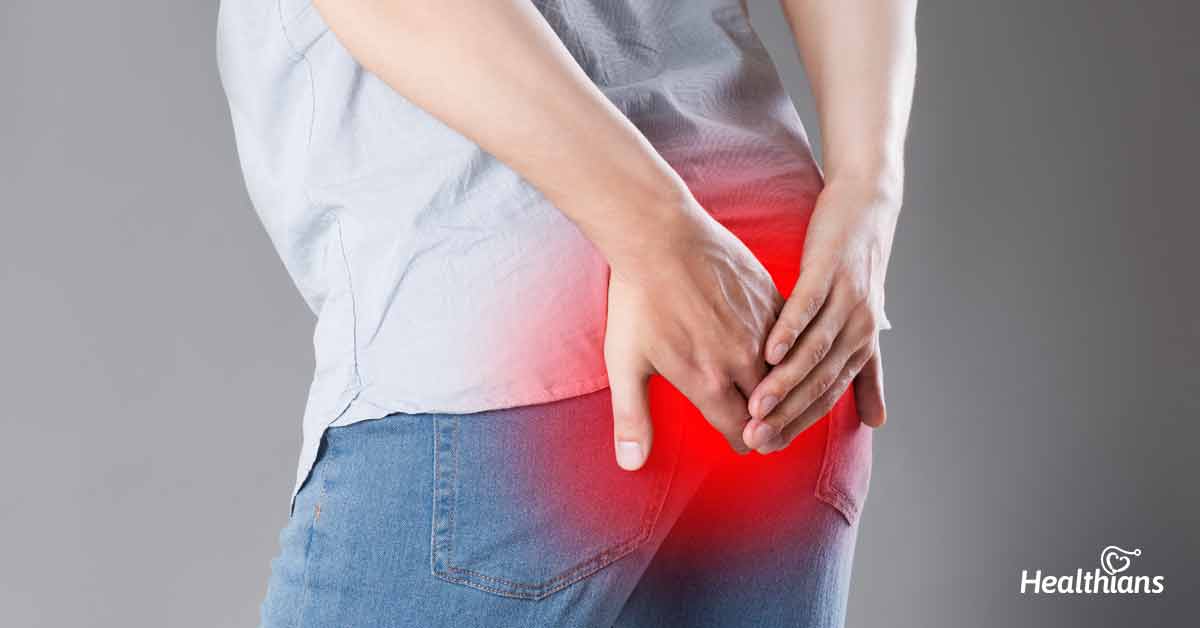Contributed by: Healthians Team
What is a pilonidal sinus?
The pilonidal sinus (PNS) is a small hole in the external skin of the anus. It usually appears at the top of the cleft (where the buttock skin splits), although it can appear elsewhere along the cleft’s length.
The pilonidal sinus is typically clogged with hair, dirt, and debris, resulting in the formation of abscesses. PNS is more likely to afflict males and young adults than women and also those who sit for prolonged periods of time and without indulging in regular physical activities.
Infection of the pilonidal sinus can lead to intense inflammation and pain. If the pilonidal sinus is infected, pus and blood may be discharged from the cyst, with an unpleasant odor.
Although the illness is rarely life-threatening, it may need surgery for the pilonidal sinus if left untreated or if the symptoms are not detected early.
What are the causes of pilonidal sinus?
The pilonidal sinus is most commonly seen during puberty when the body’s hormones change. Although, the exact causes of this disease are still unknown.
Less physical activity (exercise and other body motions) and prolonged sitting produce friction, forcing the development of hair to re-enter the buttock’s skin. The body recognizes this hair as a foreign substance and responds with an immunological reaction that results in the formation of a cyst around the cleft skin which can lead to inflammation and infection if left untreated.
The following are some of the factors that may have a role in the development of pilonidal sinus:
- Hormonal changes after puberty
- Excess hair growth, particularly curly hair on the buttock skin
- Friction caused between the clothes and the buttock due to prolonged sitting
- Obesity
What are the symptoms of pilonidal sinus?
Pilonidal sinus symptoms may include:
- Experiencing pain while sitting or standing
- Having a body temperature between 100.4 and 102.2 degrees Fahrenheit (low-grade fever)
- Swelling of the cyst
- Occurrence of reddened and sore skin around the area of the sinus
- Frequent discharge of pus and blood with an awful smell
- Protruding hair from the buttock skin area
- Formation of more than one sinus tract in the buttock skin
Tips for prevention from pilonidal sinus disease:
Pilonidal sinus disease is a common condition that may be prevented from recurring by following simple steps. These steps are:
- Maintaining a healthy and active routine
- Maintaining good anal hygiene
- Using a mild soap for cleaning
- Keeping the area dry
- Avoiding sitting for long periods of time
Pilonidal sinus diagnosis:
A doctor can only identify a pilonidal sinus through a physical examination. Any of the symptoms listed above might suggest the formation of a pilonidal sinus. Generally, the pilonidal sinus does not show any signs in the early stages.
Treatments for pilonidal sinus:
Depending on the severity of the pilonidal sinus, a doctor may prescribe one of the following pilonidal sinus surgeries after diagnosing it.
Conservative treatment
Conservative treatment for pilonidal sinus is preferred when the sinus is identified in its early phase and there is no symptom of inflammation. A broad-spectrum antibiotic routine may be recommended by the doctor to reduce the irritation, infection, and discomfort, but it will not permanently cure the condition. Broad-spectrum antibiotics are ones that are prescribed to treat a wide variety of bacteria.
Hair removal from the anus region and a frequent follow-up exam may also be advised by the doctor.
Lancing
Lancing treatment of pilonidal sinus is a process in which the doctor will open the abscess with a scalpel to remove the pus, hair, and blood from it. This procedure is termed surgery for pilonidal sinus in which the patient is given local anesthesia before the operation.
After the surgery, the doctor will use a sterile dressing to cover the wound so that it heals from the inside out. The healing process can take up to 4 weeks and may not need any additional treatment or medication.
Phenol injection
Phenol is an antiseptic chemical substance that is injected into the pilonidal sinus abscess numerous times. Before beginning the phenol injection procedure for pilonidal sinus removal, the doctor will administer a local anesthetic. Depending on the state of the sinus, the procedure may have a high recurrence rate and in some cases is replaced with surgery.
Pilonidal sinus laser surgery
To prevent pilonidal sinus disease, the Pilonidal Sinus Laser Treatment aims to completely remove hair from the anal cleft. The success rate of this surgery may be higher than that of pilonidal sinus surgery.
Pilonidal sinus laser treatment should be the preferred option since it is more successful in achieving the desired outcome and takes less time than conventional surgery for pilonidal sinus.




